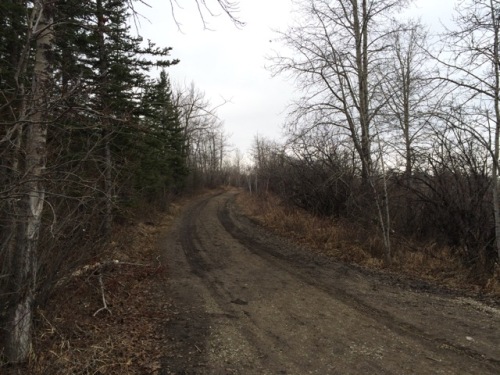This is the third in a five-part series looking at the history of the Priddis Trail. The first part, which examined the establishment of the road can be found here. while part two, focusing on the early years of the road is here. I acknowledge that the resources that inform this work are largely that of non-First Nations sources, and in particular this article will focus on a non-indigenous perspective on the decline of the Priddis Trail. The next article will look more at the Military’s use of the Priddis Trail, while the final part looks at the problematic legacy of this road, and will begin to address the perspective not covered in this section.
Three decades after beginning life as a Government highway, the Priddis Trail was in 1930 a well-used main road that served a growing agricultural district, a burgeoning oil industry, a First Nation and an important Military training camp.
The establishment in 1900 of the road, built along the route of an old trail that crossed the Tsuut’ina Nation reserve, was originally done in order to provide reliable access to lands located southwest of Calgary. The original trail between the city and the Priddis area was notorious for its chronically poor, often impassable condition, and it was expected that upon acquiring the corridor for the road from the Tsuut’ina Nation, the Government would create and maintain a modern and reliable road. It was this desire for better access that led homesteaders to petition the government to acquire the road in the first place, and yet three decades later, this objective remained largely unfulfilled; although a road had certainly been built, it was proving far from suitable.
 (The route of the Priddis Trail (magenta) between Calgary and Millarville through the Tsuut’ina Reserve (outlined in light-pink). Source: Topographical Survey of Canada, Department of the Interior. Calgary District, Alberta. Ottawa: Department of the Interior, 1926. Peel’s Prairie Provinces Archives, University of Alberta. Map 17. Highlight added.)
(The route of the Priddis Trail (magenta) between Calgary and Millarville through the Tsuut’ina Reserve (outlined in light-pink). Source: Topographical Survey of Canada, Department of the Interior. Calgary District, Alberta. Ottawa: Department of the Interior, 1926. Peel’s Prairie Provinces Archives, University of Alberta. Map 17. Highlight added.)
The new road suffered from the same wet, periodically impassible conditions that plagued the original wagon trail. The condition of the road was exacerbated in the 1920s` by an influx of traffic brought on by an oil boom in the Turner Valley, which the Priddis Trail increasingly served. In 1930 the Province of Alberta recognized that improving the road with proper drainage and a gravelled surface would benefit both residents and industry alike, and secured funding to improve and reconstruct the road in order to make the Priddis Trail into what would soon be known as Highway 22. Continue reading “The Rise and Fall of the Priddis Trail – Part 3: Closure”
























